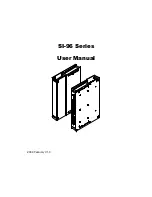
62
Table 13
Command output
Field Description
MAC TYPE
MAC address type:
•
Dynamic Unicast.
•
Static Unicast.
•
Total Unicast.
LEARNED
Dynamically learned MAC addresses.
USER-DEFINED
User defined MAC addresses (dynamic and static).
SYSTEM-DEFINED
MAC addresses generated by the system (for example, 802.1X and MAC
authentication).
IN-USE
Number of existing MAC addresses of a specific type.
AVAILABLE
Maximum number of MAC addresses supported by the system.
mac-address (interface view)
Use
mac-address
to add or modify a MAC address entry on a specified interface.
Use
undo mac-address
to remove a MAC address entry on the interface.
Syntax
mac-address
{
dynamic
|
static
}
mac
-
address
vlan
vlan
-
id
undo mac-address
{
dynamic
|
static
}
mac
-
address
vlan
vlan
-
id
Default
No MAC address entry is configured.
Views
Layer 2 Ethernet interface view, Layer 2 aggregate interface view
Default command level
2: System level
Parameters
dynamic
: Specifies dynamic MAC address entries. These entries can age.
static
: Specifies static MAC address entries. These entries do not age, but you can add or remove them.
mac
-
address
: Specifies a MAC address in the format of H-H-H, where 0s at the beginning of each H
(16-bit hexadecimal digit) can be omitted. For example, entering "f-e2-1" indicates that the MAC address
is "000f-00e2-0001."
vlan
vlan
-
id
: Specifies an existing VLAN to which the Ethernet interface belongs, in the range of 1 to
4094.
Usage guidelines
The MAC address entries configuration cannot survive a reboot unless you save it. However, the dynamic
MAC address entries are lost at next reboot regardless of whether you save the configuration or not.
















































